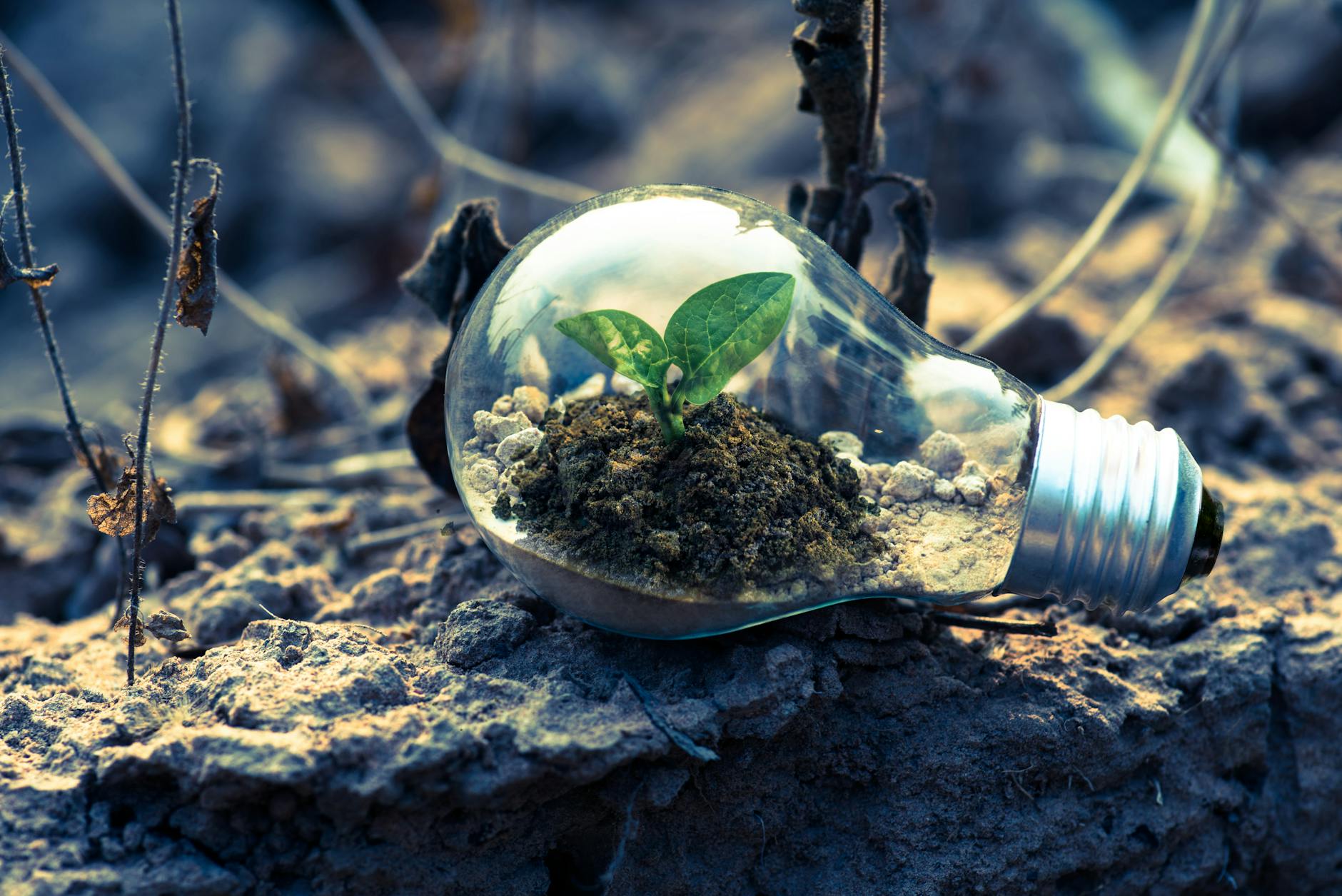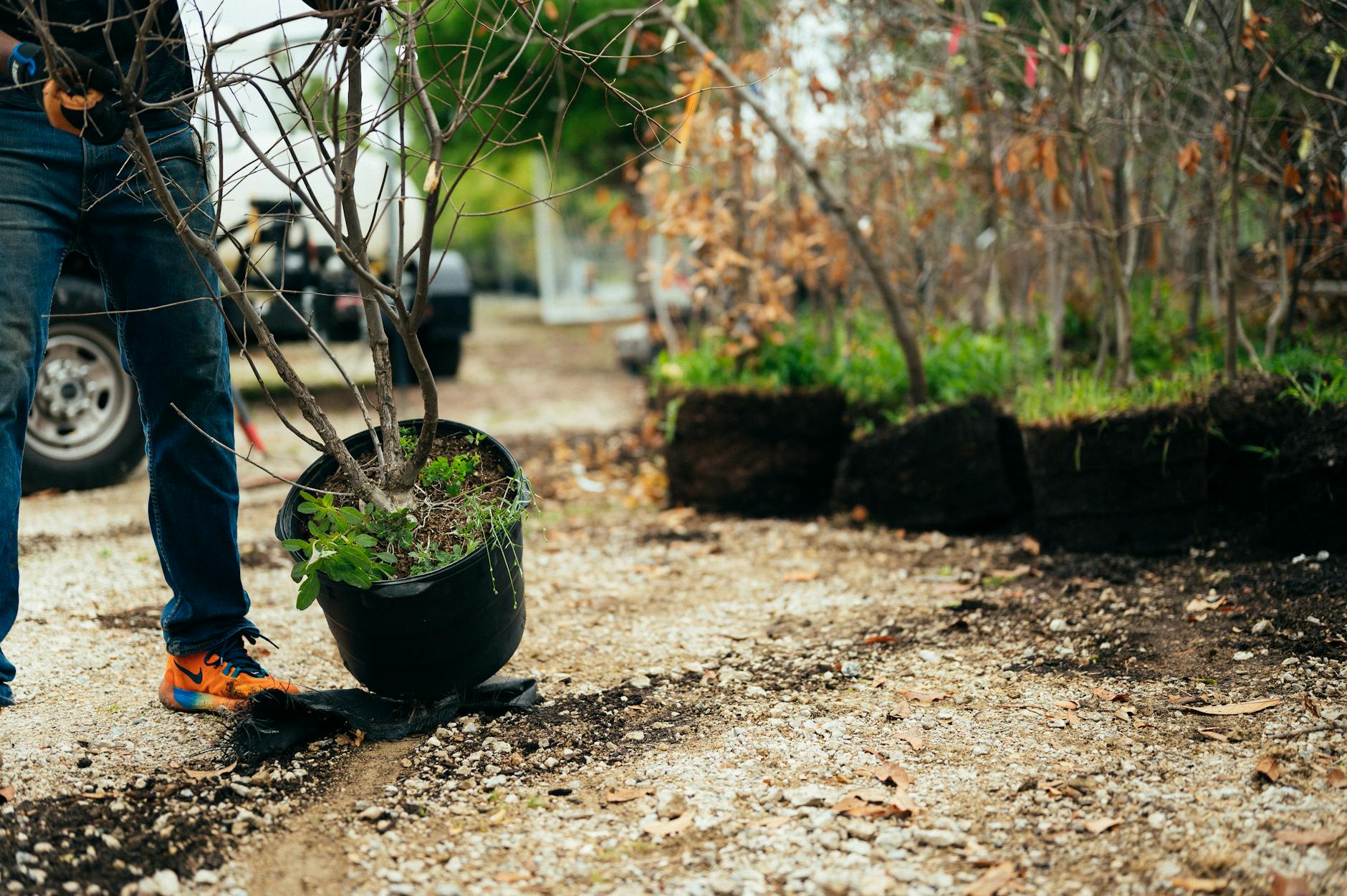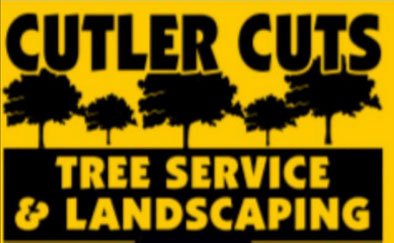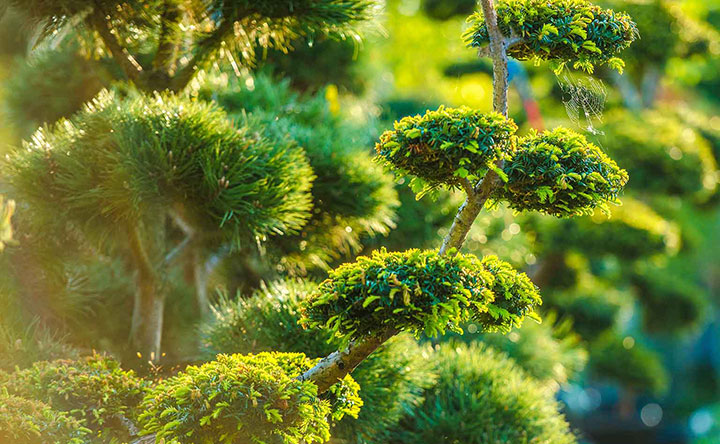Healthy soil is the backbone of strong, thriving trees and shrubs. It provides the nutrients and stability plants need to develop deep roots and resist stress. When soil is rich in organic matter and supports beneficial microorganisms, it ensures efficient water absorption and nutrient cycling. Simply put, the health of your plants starts from the ground up.
Understanding Healthy soil
Soil is more than just dirt; it’s a living ecosystem that forms the foundation for healthy trees and shrubs. Its health directly affects plant survival, nutrient absorption, and resistance to stress. Trees and shrubs thrive best in soil that’s vibrant, well-structured, and nutrient-rich. Let’s explore the essential components that define healthy soil.
Key Characteristics of Healthy Soil
Healthy soil isn’t just about having “good dirt.” It relies on several critical factors working together, much like a balanced diet keeps your body functioning properly. Here’s what to look for:
- Color: Healthy soil often has a rich, dark brown or black hue, thanks to high organic matter and decomposed material.
- Texture: A crumbly texture is ideal because it promotes proper aeration and root growth without compacting too easily.
- pH Levels: Soil with a pH near neutral (around 6.0 to 7.5) ensures nutrients are available for plant uptake while avoiding toxicities.
- Moisture Regulation: A healthy soil retains moisture without becoming waterlogged, striking the perfect balance for trees and shrubs to thrive.
For gardeners and arborists, testing soil and observing these characteristics can help determine whether your soil is ready to support strong plants. Great soil sets the stage for deep root growth, better rainfall penetration, and improved plant resilience.

The Soil Food Web and Microbial Life
Beneath the surface, a thriving world of microorganisms powers healthy soil. These microbes, including bacteria, fungi, and mycorrhizae, work like unseen caretakers by recycling nutrients, improving soil structure, and promoting plant growth. Think of it as nature’s underground team keeping everything in balance.
- Bacteria and Fungi: Bacteria break down organic matter and convert it into nutrients that plants can absorb. Fungi, particularly mycorrhizal fungi, form partnerships with plant roots to extend their reach and maximize nutrient uptake.
- Mycorrhizae: Mycorrhizae are a specific type of fungi that attach to roots, essentially acting like extra “root extensions.” They help plants access nutrients like phosphorus and nitrogen that would otherwise remain locked in the soil.
- Other Beneficial Creatures: Earthworms and other soil organisms aerate the soil, breaking down material further and stimulating microbial activity.
This interconnected system of life in the soil is called the Soil Food Web. When it’s functioning properly, the soil becomes more than just a growing medium; it becomes an active ecosystem that nourishes and protects plants.
Fostering microbial life in your soil involves practices like adding compost, reducing chemical inputs, and avoiding tillage that disrupts the soil structure. Healthy microbial activity creates a foundation for strong, resilient trees and shrubs, making your garden or landscape thrive from beneath the surface.
How Healthy soil Influences Tree and Shrub Growth
Soil isn’t just the foundation of your garden—it’s an active partner in the growth journey of your trees and shrubs. Good soil promotes healthy growth, strong roots, and natural resilience. When the soil thrives, plants don’t just survive—they flourish. To understand why soil health matters, let’s break it down into three key areas.
Nutrient Uptake and Availability for Healthy Soil
Healthy soil acts like a well-stocked pantry, providing essential nutrients for trees and shrubs. It ensures nutrients such as nitrogen, phosphorus, and potassium are present and accessible. But how does this happen?
- Organic matter, like decomposed leaves and compost, enriches the soil with nutrients plants absorb over time.
- Beneficial microorganisms convert these nutrients into forms that roots can easily take in. For example, mycorrhizal fungi partner with roots to increase nutrient absorption.
- Cation exchange capacity (CEC), a property of soil, determines how well it retains and delivers nutrients. Soils high in organic material and clay tend to have higher CEC, making them better at supplying plants with what they need.
Poor soil limits nutrient availability, leaving trees and shrubs to struggle with stunted growth, yellowing leaves, and fewer flowers. By fostering soil health, you’re essentially fueling their growth from below the surface.
Root Development and Structure for Healthy Soil
Roots are the lifeline of trees and shrubs, and healthy soil creates the perfect environment for them to thrive. Soil texture and composition have a direct impact on how roots grow and spread.
- Well-aerated, loamy soil supports deep and expansive root systems, providing stability and access to water and nutrients.
- Compact soils, like heavy clay, restrict root growth and limit access to essential resources. Roots can become shallow and weak, which makes plants more susceptible to stress.
- Sandy soil, while great for drainage, may lack the ability to hold nutrients long enough for roots to absorb them. Adding organic matter can help improve its structure.
Deep, healthy roots mean trees and shrubs are better anchored and equipped to withstand storms, droughts, and other environmental challenges. Think of roots as the foundation of a skyscraper—without a solid base, the structure can’t stand tall.
Disease Resistance and Resilience
Healthy soil isn’t just feeding your plants; it’s also protecting them. Soil acts like an immune system, helping trees and shrubs fend off diseases and pests.
- Rich soil teems with microorganisms that suppress harmful pathogens before they can attack roots. These tiny warriors outcompete bad bacteria and fungi, keeping your plants safe.
- Diverse microbial life also supports natural resilience. For instance, certain soil fungi can build a barrier around root systems, shielding them from diseases like root rot.
- Compacted or nutrient-poor soils, on the other hand, create stress for plants. Weak trees and shrubs are more vulnerable to pests, such as borers and aphids, and diseases like leaf spot or blight.
Invest in the health of your soil, and you’ll notice a chain reaction: stronger plants, fewer problems, and a garden that practically thrives on its own. After all, a healthy plant starts with healthy roots—and healthy roots need healthy soil.
Improving Soil Health for Stronger Trees and Shrubs
Maintaining healthy soil is fundamental for the growth and resilience of trees and shrubs. When soil provides the right nutrients, structure, and moisture balance, it creates an ideal environment for strong root development and longevity. Let’s explore simple yet impactful ways to improve soil health, tailored specifically to trees and shrubs.
Adding Organic Matter

Organic matter acts like an all-natural booster for soil, improving fertility, structure, and the overall ecosystem beneath your plants. Adding organic matter such as compost and mulch can transform ordinary dirt into a thriving habitat for your trees and shrubs.
- Compost: Compost is decomposed organic material rich in nutrients. It supplies essential elements like nitrogen, phosphorus, and potassium, while increasing microbial life critical for nutrient cycling. Spread a 1-2 inch layer of compost around the base of trees and shrubs, keeping it about 6 inches away from the trunk to prevent decay.
- Mulch: Mulching protects the soil and keeps it healthy. Apply a 2-to-4-inch thick layer of wood chips, leaves, or bark around trees and shrubs. Not only does it suppress weeds and regulate soil temperature, but as it breaks down, mulch adds organic nutrients back into the soil.
- Other Amendments: Incorporate organic materials like manure, kitchen scraps, or leaf mold into garden beds to boost soil structure and moisture retention.
Adding organic matter isn’t a one-time fix—it’s an ongoing process. The more you nurture your soil with organic materials, the healthier your plants will be.
Soil Testing and Amendments
Soil testing is like a health checkup for your trees and shrubs. It identifies which nutrients are lacking, whether your soil is too acidic or too alkaline, and what steps are needed for improvement.
- Why Test? Soil tests reveal key factors like pH levels (a scale from acidic to alkaline), nutrient deficiencies, and organic matter content. For most trees and shrubs, a slightly acidic to neutral pH (6.0–7.0) is ideal. Testing prevents over- or under-fertilizing, which can harm plants.
- How to Amend: Based on test results, adjust your soil accordingly:
- For acidic soil, add lime to raise the pH.
- For alkaline soil, sulfur or organic materials like pine needles can lower it.
- Apply fertilizers that balance deficient nutrients—whether organic, such as bone meal, or synthetic blends.
Testing your soil every 2-3 years ensures your trees and shrubs get the nutrition and environment they need to thrive.
Preventing Soil Compaction
Compacted soil is a common, silent killer of trees and shrubs. Roots struggle to grow in dense soil, leading to stunted growth and poor health. Preventing compaction is critical for maintaining healthy root systems and thriving plants.
- Aeration: Aerating the soil helps introduce oxygen and improve drainage. Use a garden fork or specialized aeration tool to gently loosen the soil around trees and shrubs, avoiding damage to roots.
- Proper Planting Techniques: When planting, avoid stepping on the soil around the area. Consider digging a wider hole than needed to provide roots with soft, loose soil to grow into.
- Limit Foot Traffic: Keep heavy equipment, vehicles, and even excessive foot traffic away from tree root zones (known as the drip line). If needed, create paths or buffer zones with mulch to protect the soil from compaction.
By focusing on methods that maintain airy, well-draining soil, you set the stage for deep root growth and healthier plants. A little bit of attention to soil structure goes a long way to ensure your trees and shrubs flourish.
Common Soil Challenges and Solutions
Healthy soil is the foundation for robust trees and shrubs, but it’s not without its challenges. From erosion to nutrient depletion and contamination, soil problems can hinder growth and health. The good news? There are practical solutions that can restore and rejuvenate the soil, making it a thriving home for your plants. Below, we’ll explore common soil challenges and effective ways to overcome them.
Erosion Control

Soil erosion isn’t just an eyesore—it’s a major roadblock to healthy plant growth. When soil washes or blows away, it takes essential nutrients and organic matter with it, leaving behind a barren landscape that struggles to support vegetation.
Here’s how you can keep soil where it belongs:
- Ground Covers: Ground-hugging plants like clover, creeping thyme, or grasses create a protective shield. Their roots grip the soil tightly, reducing the risk of erosion even during heavy rains.
- Mulching: Applying organic mulch (such as wood chips or straw) around trees and shrubs helps retain moisture and minimizes soil displacement caused by wind or water.
- Effective Planting Strategies: Planting trees and shrubs along the contours on sloped areas helps slow water runoff. For added protection, consider interplanting with shrubs or perennial ground covers to strengthen soil stability.
These strategies not only prevent erosion but also improve soil health by keeping it anchored and nutrient-rich.
Addressing Nutrient Depletion
Nutrient-depleted soil is essentially a barren pantry for your plants. Without adequate nitrogen, phosphorus, or potassium, trees and shrubs experience stunted growth, pale foliage, and poor flowering or fruiting.
Here’s how to bring nutrients back to life:
- Compost and Organic Fertilizers: Compost is packed with nutrients and microbes that enrich the soil. For added oomph, use fertilizers made from natural sources such as bone meal, worm castings, or manure.
- Crop Rotation and Companion Planting: Rotating crops or planting nitrogen-fixing species (like peas or clover) can replenish key nutrients.
- Soil Testing and Custom Solutions: Test your soil to identify deficiencies and amend it accordingly. Organic or slow-release fertilizers are great for replenishing specific nutrients without harming the environment.
Think of organic fertilizers as a slow, steady meal for your soil, while compost works like a multivitamin—it adds everything your plants need for long-term health.
Dealing with Contaminated Soil
Soil contamination poses a significant threat to plant growth, especially in areas exposed to chemicals, industrial waste, or urban runoff. The challenge lies in rehabilitating the soil without jeopardizing plant or environmental health.
Here’s how to handle contaminated soil:
- Bioremediation: Bioremediation uses microorganisms to break down harmful substances naturally. For example, certain plants like sunflowers or mustard greens can draw out heavy metals from the soil, making remediation both practical and eco-friendly.
- Raised Planting Beds: For heavily contaminated soil, consider raised beds filled with clean, healthy soil. This approach is especially beneficial for growing vegetables or small trees where contamination prevention is critical.
- Barriers and Soil Additives: Adding barriers like geotextiles between contaminated and clean soil can help prevent the spread of toxins. Organic materials such as biochar can also neutralize certain contaminants over time.
With the right approach, even compromised soil can support healthy plant life. By addressing contamination, you’re not just protecting your plants—you’re safeguarding the environment as well.
Each soil challenge has a solution, and even the toughest problems can be resolved with targeted practices. Address these issues head-on, and you’ll create an environment where trees and shrubs can thrive for years to come.
Conclusion
Healthy soil is the foundation for thriving trees and shrubs. It fuels robust roots, supports efficient nutrient uptake, and protects plants from stress. Neglecting soil health puts trees and shrubs at risk, while prioritizing it ensures long-term success.
Take actionable steps like adding organic matter, testing soil regularly, and preventing compaction. These small efforts yield significant rewards, from vibrant growth to natural resilience.
Remember, your soil is not just dirt—it’s a living ecosystem. Care for it, and your landscape will repay you with strength, beauty, and longevity. How will you start improving your soil today?

